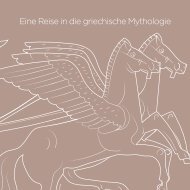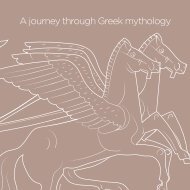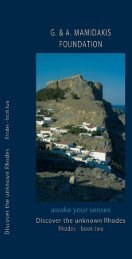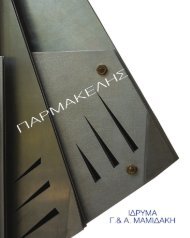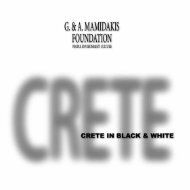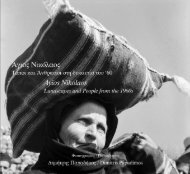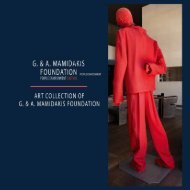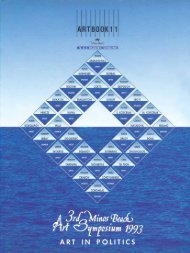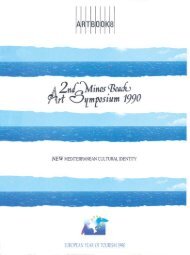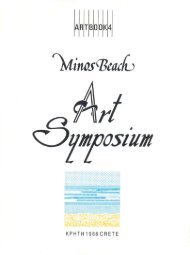EASTERN CRETE
Discover the unknown Crete. Easter Crete, Book one G&A MAMIDAKIS FOUNDATION
Discover the unknown Crete. Easter Crete, Book one
G&A MAMIDAKIS FOUNDATION
Create successful ePaper yourself
Turn your PDF publications into a flip-book with our unique Google optimized e-Paper software.
C H A P T E R 4<br />
The Venetian castle<br />
of Sitia in an old<br />
engraving. Today<br />
the fortress, known<br />
as kazarma and<br />
which was<br />
destroyed by the<br />
Ottomans, has been<br />
partially restored.<br />
The Venetian<br />
influence in<br />
architecture and<br />
arts is still to be felt<br />
in many places<br />
around Sitia<br />
Starting out from Sitia (the city which has<br />
lent its name to the whole region, in that<br />
Lasithi is simply a distortion of the Venetian<br />
"La Sitia"), our journey takes us into the most<br />
hidden lands of the Eteocretans, the "true<br />
Cretans", who, after the destruction of the<br />
Minoan palaces, preserved the customs, the<br />
language and the religion of the Minoans for<br />
many centuries. Following the end of the<br />
ancient world it was, however, the Venetians<br />
who left a strong imprint on the region, and<br />
their traces can be found in the cities, the<br />
small villages and the ruins dotted about<br />
the territory. In a document of the era, the<br />
Venetians describe the population of Sitia<br />
as "peaceable and respectful of the laws<br />
and lovers of feasts".<br />
The Turkish presence was also strong,<br />
governing the region with an iron fist, and<br />
the occupiers were guilty of innumerable<br />
massacres many of which were the work of<br />
Khaireddin Barbarossa, a pirate in the pay<br />
of the Ottomans.<br />
78






